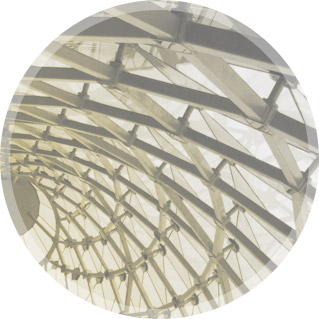University of Illinois at Chicago
School of Architecture
The School of Architecture understands that the role of architecture is not simply to serve needs but to anticipate them, to envision alternative means of interacting with one another, along with alternative objects, activities, and environments. For this reason, we believe architecture is best taught as a discipline (based on a historical and contemporary set of techniques for thinking, working, and judging) and advanced as a cultural practice (more like music, art, film, and literature than business, medicine, or engineering). Our responsibility is to provide students with choices, to prepare them to go places they could not previously have imagined by instigating a passion and optimism for the discipline of architecture, and to instill the intellectual and technical background that allows them to succeed in a diverse array of practices. We are a boutique public school: open to anyone, but not for everybody.
http://arch.uic.edu
Setting
Chicago is an ideal launching pad for urban and architectural speculation. Operating at the intersection of catastrophe and ingenuity, Chicago has lifted the entire ground plane of the city, reversed the course of its river, and filled the lake with parks and the sky with buildings. It lays substantial claim to extending the urban possibilities of the grid, the frame structure, the plan, the futures market, the mail-order catalog, the skyscraper, the superblock, the suburb, and sprawl, as well as visualizing an expanded repertoire of domestic and metropolitan lifestyles from Ward and Sears to Johnson and Hefner. For students at the School of Architecture, direct access to this model of experimentation is coupled with the resources and opportunities generated by an especially active community of alumni, design practices, and architectural institutions. In particular, the school enjoys close ties to prominent cultural organizations (the Graham Foundation for Advanced Studies in the Fine Arts, the Art Institute of Chicago) as well as a network of international and local firms, including those led by the school’s award-winning faculty practitioners. The School of Architecture at UIC is located within one of the country’s major urban public research universities, and it is from this context that the school extends its three-part agenda: to condition the metropolis, construct new audiences, and circulate ideas. Established in 1965, UIC now enrolls over 33,000 students and is one of the top-200 research-funded institutions in the world. As a part of the College of Architecture, Design, and the Arts (along with the School of Art and Art History, the School of Design, the School of Theater and Music, Gallery 400, and the Jane Addams Hull-House Museum), the School of Architecture benefits from a commitment to building a dynamic and diverse collection of faculty and intellectual, aesthetic, and cultural interests.
School Philosophy
The UIC School of Architecture promotes architecture as a cultural practice of organizing information, of intelligently identifying and deploying patterns—conceptual, visual, structural, behavioral, and material—in the world. The program prepares its graduates to project all scales of these spatial and organizational patterns through the systematic development of an aesthetic attitude, a technical confidence, and a theoretical opportunism. When deployed creatively, architecture and urbanism are two of the most powerful tools available to remake the world as an artifact of our desires, ethics, and ideologies. Informed by a contemporary and historical understanding of its discipline and location, the School of Architecture ventures to liberate and install new forms of collective association and material arrangement through all media of architectural design and research. Consistent with this commitment, the school recognizes its primary mission to prepare graduates able to think, negotiate, and collaborate through all genres of design; to direct diverse project teams; and to generate design artifacts and arguments with a contemporary cultural and disciplinary resonance. Revolving around an intensive design and studio culture, the School of Architecture is energized by an environment that enjoys animated polemics and debate, characterized by extreme rigor, frequent irreverence, contagious curiosity, and calculated optimism.

Programs
The School of Architecture currently offers two undergraduate degrees, three graduate degrees, and an undergraduate minor. The four-year Bachelor of Science in Architecture (BSArch) program provides a pre-professional education in architecture within the broader context of liberal arts courses provided by UIC. Consisting of an eight-semester studio sequence in architecture and urbanism supported by coursework in technology and theory, the program provides an intensive introduction to the discipline of architecture. The two-year Bachelor of Arts in Architectural Studies (BA) is an upper-level undergraduate degree that uses architecture and related design practices as a lens through which to understand the history of ideas and cultural invention. The BA is ideal for transfer students and is designed to equip graduating students with everything they need to successfully prepare an application to a Master of Architecture program, either at UIC or elsewhere. The Master of Architecture (MArch) is a three-year, NAAB-accredited professional degree for students with either an undergraduate degree in architecture or an undergraduate degree in any other field. The studio-centered curriculum is supported by required and elective coursework in architectural technology and theory. The one-year Master of Science in Architecture (MSArch) program is a post-professional degree designed for holders of a professional degree in architecture or its international equivalent. It is an intensive course of study intended to further students' critical skills and analytical abilities while expanding their architectural expertise. The Master of Arts in Design Criticism (MAD-Crit) is a two-year academic degree that develops textual and visual argumentation in the areas of architecture, urbanism, landscape, and allied design practices. The program is open to postgraduates and mid-career professionals in architecture and related fields (including those already practicing as critics, journalists, or curators) who are interested in refocusing on research, writing, and publication.

of Focus
1.History | Theory | Criticism
2. Urbanism
3. Digital Design & Visualization

Opportunities

Facilities

Policies
Transfer Policies
Transfer students are those who have completed a minimum of 24 semester hours or 36 quarter hours at the time of application and who do not meet the definition of a beginning first year or readmission applicant. For fullest consideration for transfer admission into the School of Architecture, a 2.75 GPA is recommended (though it will not guarantee admission). No more than 60 semester credit hours of community college work can be applied to the degree. In addition, either the first 90 or last 30 semester credit hours of degree work must be completed in continuous, uninterrupted residence at UIC.



